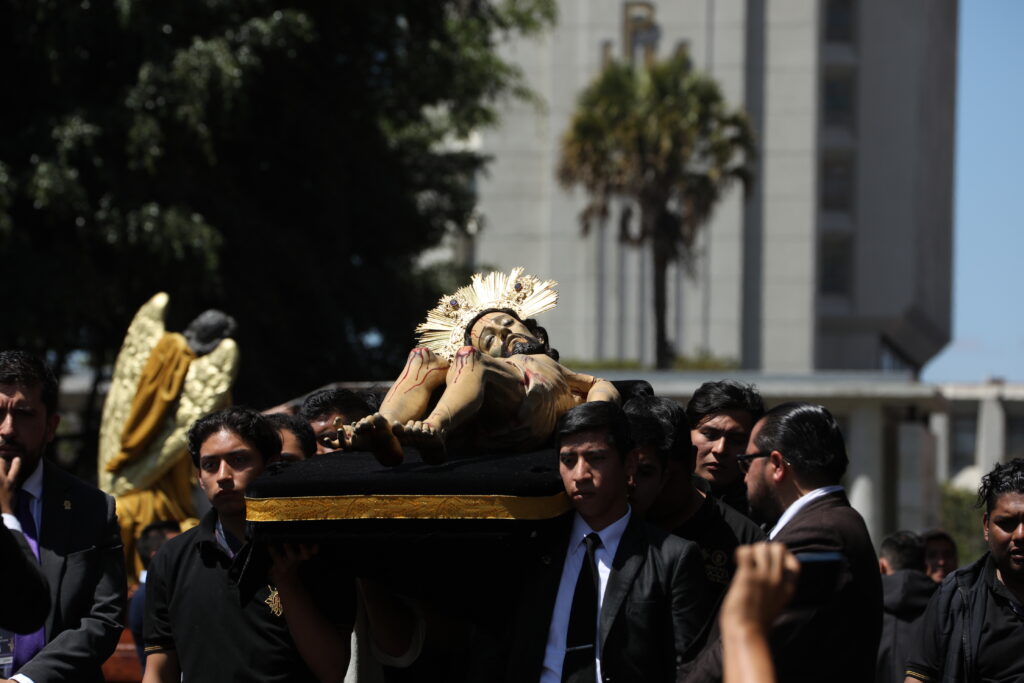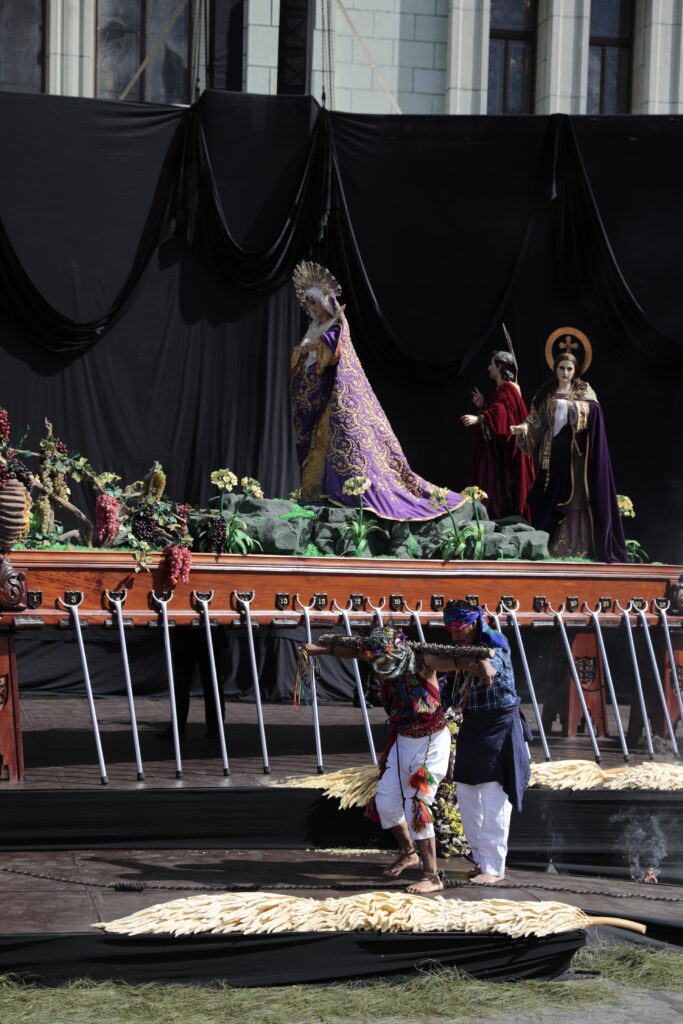Guatemala City, by -AGN.- Many of the decorations for the religious processions are created six months before Holy Week.
This time may seem too long, but still, many decorations are made last minute to have the procession ready.
The Passion images are decorated with new ornaments and vestments for this special season.
If funds are abundant, new garments are produced every year. “A tunic can cost between USD 1,500 to USD 1,800,” a professional tailor stated a few years ago.
These prices may seem excessive for most people and for those unfamiliar with textile art, these prices may seem outrageous.
Even more, embroidering sacred garments seems to be an art yet to be discovered.
Materials Quality
The high cost of sacred garments is due to the type of materials used.
Before, people used to bring gold thread from Spain, but now they use synthetic thread from Mexico because it is cheaper.
According to the Virgin’s dressmakers, the downside is that it only has 27 percent gold.
To produce a large tunic requires laborious work for at least six months.
The reason for this is that each piece has an exclusive design stamped on it. Usually, embroidery with gold threads refers to a Eucharistic message.
However, as can be seen in recent presentations, floral details are also included.
Garments Details
Embroidered tunics, cloaks, and mantillas for Passion images carry floral messages.
For example, the mantles of the Nazareno are garnished with lilies, daisies, lisianthus, and many other Guatemalan species.
The base for embroidery in gold threads is velvet or corduroy.
First, the designs are made by hand and then embroidered thread by thread.
Jesus Tailor
One of the artists behind Holy Week is the expert Ramiro Gálvez.
His workshop in Santa Lucia, Cotzumalguapa, has produced real works of art to dress Passion images.
Working tirelessly with him is a group of around 16 apprentices.
Both the teacher’s hands and his students’ hands have that delicacy and elegance worthy of a royal tailor.



Hand-sewn Embroidery
The prestigious embroidery is sewn with gold thread imported from Mexico or France.
There are also other colors ranging from red wine to purple and blue.
The elaboration of a mantle two meters long and 50 centimeters wide requires the daily work of eight people for two months.
Several María Santísima de la Soledad mantles from the Escuela de Cristo, Antigua Guatemala, have been embroidered in this workshop.
The tunic of Jesús de Candelaria was created and embroidered for more than 30 years in the Santa Lucía workshop.
The peculiarity of the mantles and tunics of the Passion images is that they are unique and unrepeatable.
Once they have been used, they are rarely seen again in a procession, which makes them true jewels for posterity. In this way, garments from different periods are preserved in Guatemala.
These include the consecration tunic of Jesús de la Merced, over three centuries old, and the of Jesús de Candelaria tunic, a gift from Nobel Prize winner Miguel Ángel Asturias.
This textile richness is part of the Holy Week in Guatemala, the Intangible Cultural Heritage of Humanity.




